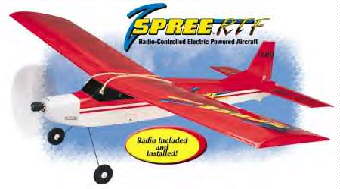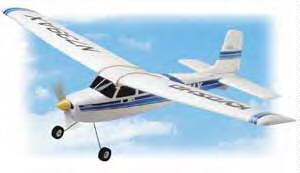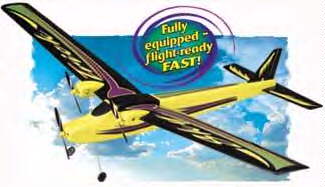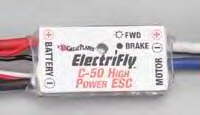 |
Flying High With Electric Power!
The Ampeer ON-LINE!
Fly the Future - Fly Electric! |
Site Table of Contents
| President: | Vice-President: | Secretary/Treasurer: |
| Ken Myers | Richard Utkan | Debbie McNeely |
| 1911 Bradshaw Ct. | 240 Cabinet | 4733 Crows Nest Ct. |
| Walled Lake, MI 48390 | Milford, MI 48381 | Brighton, MI 48116 |
| (248) 669-8124 | (248) 685-1705 | (810) 220-2297 |
 | ||
| Board of Directors: | Board of Directors: | Ampeer Editor |
| Jim McNeely | Jeff Hauser | Ken Myers |
| 4733 Crows Nest Ct. | 18200 Rosetta | 1911 Bradshaw Ct. |
| Brighton, MI 48116 | Eastpointe, MI 48021 | Walled Lake, MI 48390 |
| (810) 220-2297 | (810) 772-2499 | (248) 669-8124 |
| Mailed Ampeer subscriptions are $10 a year US & Canada and $17 a year world wide. FREE on-line! | ||
| The Next Meeting: Date: Saturday & Sunday, July 7 & 8 Place: Midwest R/C Society 5 Mi. Rd. Field Time: 9:00 a.m. | ||
|
From: Peter Haworth pjhaworth@tassie.net.au Greetings from Oz. I've finally had the time to take a few pictures of my recent
projects to share with EFO members. Today was a public holiday due to Easter, and what better time to go flying, especially
with a new plane. When I first took up R/C electrics a few years ago, the second kit I bought was the Great Planes .40 size J-3
Cub, as it is a plane I really like. It has taken until now to finally do something with the kit.
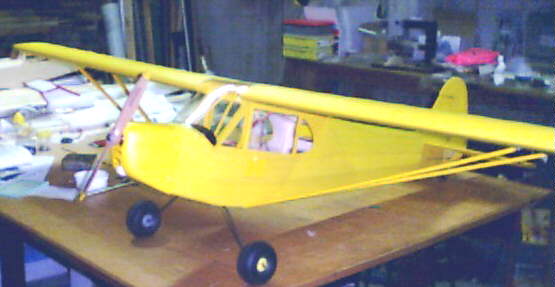 I have attached some photos which show the layout in the plane, and also the
battery configuration. A bamboo skewer through the balsa "dummy" cells on the pack and the top and bottom
battery box plate is used to locate the battery. All up weight, without the sundry scale detailing I plan to do came out at 3790g,
approximately 400g more than the maximum design weight. With the receiver battery under the trailing edge of the wing, the C
of G was spot on, but the location may be moved in order to balance when all detailing is finished. I will use registration
VH-AGA which is an Australian registered yellow J-3, and the owner is kindly sending me some pictures to assist in detailing.
On the 12x8, static current draw is about 29 amps, which, in the air, should unload probably 3 or 4 amps to leave the draw
comfortably within the 30 amp max draw these cells can reliably put out. I will charge these at 4 amps using the Reflex mode on
my Orbit Microlader Pro charger.
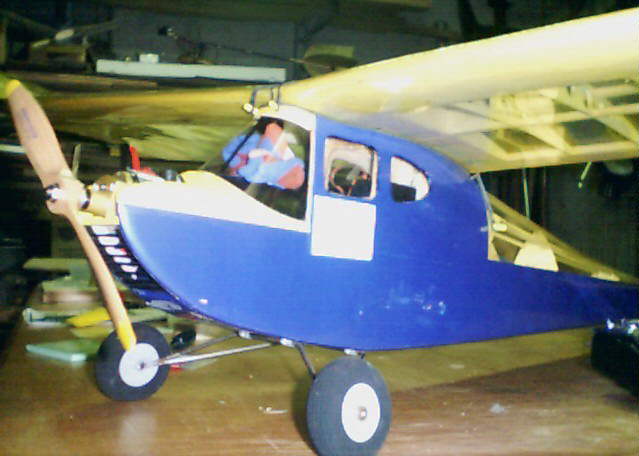 The second plane I'll report on is a Buzzard Bombshell old timer which I had
converted to electric. When I bought the plane it had a PAW 35 diesel in it, with 500g or lead in the nose to make it balance.
Regards,
PS I saw a 1985 issue of the AMA magazine which includes reports on 1984 KRC, and some photos of a much younger Bearded One - 'twas most interesting, particularly reports about the Horton etc. Recommendations for Electric Powered Flight Systems
Part 4
The following is a brief explanation of how I look at possible uses for a motor.
|

|
A study of Table 1 shows that a 25 amp draw has an unacceptable efficiency and that the only likely candidates for this motor on 6 cells is the Glider/Old Timer type based on power system weight using amp draws of 10, 15 and 20. Case 1: Glider/Old Timer type using 10-amp draw Wing area = (21.24 / 1.15 * 144)3/4 = 370 sq.in. Total Weight = 46.46 watts / 35 = 1.327 lb. or 21.24 oz. Power System Weight = 21.24 * 0.55 = 11.68 oz. Doable with cell weight not exceeding 11.68 - 6.8 (motor weight) = 4.88 / 6 = .81 oz. each Radio Weight = 21.24 * 0.15 = up to 3.19 oz. (Typical: Hitec 555 no cover 0.55 oz., 2 HS-60 0.49 ea, 150 mAh Rx pack 1.3 oz., ESC 0.6 oz. = 3.43 oz.) While the radio weight can be reduced still, the first red light comes on here. Airframe Weight = 21.24 * 0.30 = 6.37 oz. With my building skills, Iíve found that, on average, I can build a "safe" thermal glider at about 0.025 oz. per square inch. 370 * 0.025 = 9.25 ounces The best "I" could probably do is: Power system with 600AE (0.7 oz. each) 11 oz. + 3.43 (radio) + 9.25 (airframe) = 23.68 oz. This would yield 31.5 watts out per pound, and would probably fly okay as a glider. An old timer would be unacceptable, as I can build that type of structure at about 0.035 oz. per sq.in. and that would mean an airframe weight of 12.95 oz. and finished weight of 27.38 ounces, or 27.28 watts out per pound. The "recommended" prop would be: Prop Diameter = SQRT(21.24 * 2 / Pi) * 2 = 7.35 in. rounded to 7 Prop Pitch = 7 * 0.65 = 4.55 or round down to 4 because it is a glider type. RPM = 11,656 (from table) at 10 amps While it is easy to set up a prop/motor/amp table in a spreadsheet, Iím going to run through the "long hand" way to show it can be done without a computer. 7x4 folder prop watts at 11,656 = (7/12)4 * (4/12) * 1.18 * 11.6563 = 72.12 watts The prop output is too high. The output of the motor and the prop outputs should match. To slow the RPM and bring the motor and prop watts closer to equal, the amps must go up. motor volts at 11 amps = (6 * 1.25) - (6 cells * 0.012 * 11 amps) - (11 * 0.03) = 6.378 motor volts motor out watts at 11 amps = 6.378 motor volts - (0.126 * 11) = 4.99 prop volts * (11 - 1.1) = 49.42 watts out RPM = 4.99 * 2233 = 11,143 prop watts = (7/12) 4 * (4/12) * 1.18 * (11.143) 3 = 63 watts The prop output is again too high, as the output of the motor and the prop should match. To slow the RPM even more, the amps must go up. motor volts at 12 amps = (6 * 1.25) - (6 cells * 0.012 * 12 amps) - (12 * 0.03) = 6.276 motor volts motor out watts at 12 amps = 6.276 motor volts - (0.126 * 12) = 4.764 prop volts * (12 - 1.1) = 51.93 watts out RPM = 4.764 * 2233 = 10,638 prop watts = (7/12)4 * (4/12) * 1.18 * (10.638)3 = 54.83 watts This is close enough to guess that a 7x4 folder will pull just over 12 amps at about 53 watts out. Using my simple motor-prop predictor spreadsheet, I found 12.3 amps and 52.5 watts out. What we now know about a glider using this power system is: Finished weight: 52.5 watts (computed using 7x4 folding prop) / 35 = 1.5 lb. or 24 oz. Wing area about: 405 sq.in. (revised using 24 ounces as the completed weight) Wing area range: 385 - 425 sq.in. (range is plus and minus 5% of the suggested wing area) Power system weight: 11 oz. Airborne Radio Weight: 3.6 oz. Completed Airframe Weight: 9.4 oz. Prop: 7x4 folder Amp Draw: 12.3 RPM: 10,485 Watts Out: 52.5 While it is quite feasible to build this plane with this power system, it is not recommended, since the amp draw is a little too high for 600AE cells, and the airborne radio system allotment is too low to contain a reasonable receiver battery for thermal soaring of a glider or old timer. Case 2: Glider/Old Timer using 15-amp draw and having a weight of 56.7 watts / 35 = 1.62 lb. or
25.92 oz.
Case 3: Glider using a 20- amp draw having a weight of 65.32 watts / 35 = 1.87 lb. or 29.92 oz.
|

|
Looking at the Actual Power System weight column, it can be seen that this system
appears to only be useful with glider or old timer types. Actually, Iíd not recommend it with glider or old timer types, since the
prop diameter is not large enough. Here is an example using the 20 amp draw:
New Electric Airplane Releases!
NEW COVERING FOR PARK FLYERS Factory "doped" with a totally fuel-proof resin, CoverLite Iron-On
Tissue Covering from Coverite is super lightweight, as well as stronger and more puncture-resistant than normal doped tissue.
At only 1 oz per square yard (28g/m2), itís an excellent choice for covering weight-sensitive aircraft such as park flyers and
models with wingspans up to 50 inches. CoverLite is heat sealed to the model - no dope is required (Balsarite Adhesive is
recommended). It can also be painted with most model paints. Each sheet measures 36" x 19.5" (915mm x 495mm). Choose
from nine popular colors; white, yellow, orange, red, blue, cream, black, dark green, and silver. Retail: $4.99
Everything about the Kyosho Spree RTF says easy! It comes nearly 100%
assembled, and with just about everything included to get airborne. The Spreeís quality stands up to the best-built kits, making it a
trainer that any beginner will be proud to show off at the flying field - as well as a fun-to-fly electric alternative for experienced
pilots.
Wingspan: 40 in (1010mm) Wing Area: 295 sq.in. (19dm2) Approx. Weight: 1.5 lb. (670g) Length: 30 in (760mm) Motor Type: 380 class Requires: 8 "AA" batteries for the transmitter, charger, phillips screwdriver KYOA09** Spree Electric RTF Retail $239.99 Visit the Kyosho world wide web site at: www.kyosho.com When the EP Cessna 180 Trainer came out last summer, beginners were impressed
by its level of pre-assembly, sturdy, lightweight foam construction and clean, quiet electric flight. Kyosho has now taken that
concept even further with an RTF version that also includes a 2-channel radio - making this EP Cessna 180 a most complete
electric trainer.
Wingspan: 51.2 in (1300mm) Wing Area: 408 sq in (26.3dm2) Weight: 3.1 lb (1400g) Length: 36.2 in (920mm) Motor: EP550 (included) Radio: Perfex 2-Channel (included) Requires: 7.2V 1400 mAh NiCd battery, charger KYOA08** EP Cessna 180 RTF Trainer w/Radio - Retail $239.99 Itís more advanced than free flight, but less costly and complicated than a servo-equipped R/C trainer! The Sky Trick from FlyZone by Hobbico bridges the gap between free flight and R/C. It uses 2-channel radio control with a easy-to-operate 3-motor propulsion and steering system. Made of lightweight, durable foam, the Sky Trick requires no gluing. The main wing and tail section mount with screws, and a screwdriver is supplied for convenience. Each motor (one in the nose, and one on each wing) has its own prop. The left stick controls forward flight and climbing, while the right stick controls the wing motors and props for steering. A Nickel Metal Hydride battery comes with the model, and the included field charger provides fast recharges. An auto cutoff feature shuts off the motors when battery power is low. Thereís even a free video included that offers helpful tips on final assembly and flying. Wingspan: 35 in (889mm) Length: 24.5 in (622mm) Includes: 2-channel radio, (3) 180-size electric motors, NiMH battery, 12V DC field charger, video, screwdriver Requires: 8 "AA" batteries for the Tx Retail: $99.99 HCAA2009 Sky Trick EP RTF Visit the Hobbico world wide web site at: www.hobbico.com Itís the newest, and most powerful, ElectriFly ESC yet, and itís designed for aircraft requiring up to 50A of continuous current. The C-50 High Frequency ESC from Great Planes has the same small size, light weight and easy setup that distinguish all ElectriFly ESCs, but with even more power. It comes equipped with fully proportional forward with brake, and smooth throttle response without noticeable "steps". It also features start-up near low throttle, with full power near full stick. An on/off switch and setup LED simplify operation, and the battery and radio connectors are preinstalled. A safe-start function prevents accidental motor spin at start-up, and low voltage cutoff maintains radio control in the event of low battery power. High-frequency operation optimizes battery run-time and aids in cooling, and BEC delivers adequate current for your receiver and three standard servos. Plus, the C-50 offers temperature protection, reverse polarity protection and fused overload protection. Input: 5-10 cells Output: 50A continuous max. Operating Frequency: 1.5kHz BEC: 5V/1.5A Low Voltage Cut-Off: 4.6V Dimensions: 1.5 x 0.78 x 0.38 in (38 x 20 x 10mm) Weight w/Wires: 1.2 oz (34g) GPMM2050 C-50 High Power Hi Freq ESC w/BEC Retail $79.99 Visit the Great Planes world wide web site at: www.greatplanes.com Mid-America Flies - Road Construction Note If you come up I-75 to I-275, the interchange at M-14 is closed. Get off I-275 at Ann Arbor Road and go west to Sheldon Road. Go North on Sheldon Road to Five Mile Road. Go West on Five Mile Road to the Midwest R/C Society Flying field, which is located just west of Ridge Road and over the railroad tracks. Skymastersí Meet Pete Foss runs a great meet for electrics, sailplanes and small glow. If you live within an hour or two drive of Detroit, you ought to go next June.  The June EFO Meeting The June meeting was a flying meeting held at the Midwest R/C Society field. It was an absolutely perfect day for flying. The EFO members had the field mostly to themselves and had a ball. Only 3 glow planes showed up to fly, and a handful of helicopters flew at the helicopter field. 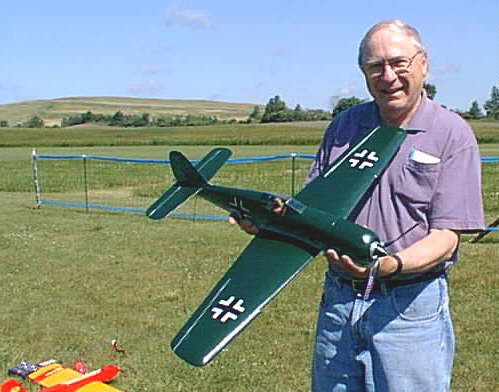 The lead picture is Tom Bacsanyi with his virgin House of Balsa FW-190 with geared brushless AF020 power. I had the pleasure of the maiden flight, and it did fly "right off the board" with no problems. Tom uses NiMH cells, and flights are long and fun. No bad habits at all. My much flown X-250 is in the lower left corner of this photo. 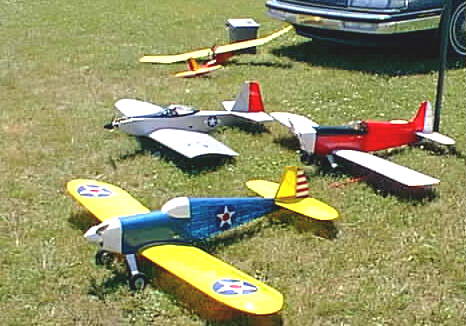 Rick Sawicki had a small fleet of great flying planes to take advantage of the beautiful day. His 20 (not 020) powered Lazy Tiger P-51 is quite a good flier. Richard Utkanís Push-e-Cat can be seen in the background. 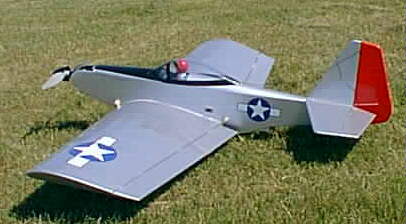 Mid-America Electric Flies
To Reach Ken Myers, you can land mail to the address at the top of the page. My E-mail
address is:
KMyersEFO@aol.com
|
